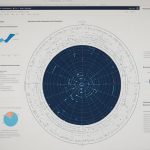Understanding Data-Driven Customer Segmentation
In today’s competitive travel industry, customer segmentation strategies are crucial for gaining a competitive edge. Data-driven segmentation allows travel agencies to identify distinct groups within their customer base by analyzing specific patterns and preferences. Through the adoption of data-driven approaches, agencies can tailor their services and marketing efforts to better meet the needs of various customer segments.
One of the main benefits of such segmentation is enhanced customer engagement. By understanding the nuances of each segment, travel agencies can curate personalized experiences, which in turn fosters stronger relationships with their clients. Moreover, segmentation enables travel agencies to allocate their marketing resources more efficiently, targeting segments with the highest likelihood of conversion and satisfaction.
Topic to read : Discovering Breakthroughs: Harnessing Data Visualization for Research Insights at Oxford Institute
Travel agency insights indicate that data-driven segmentation not only improves customer engagement but also significantly boosts operational efficiency. By leveraging analytics and customer data, agencies can streamline their offerings, reducing redundant efforts and focusing on areas with the highest impact. This strategic approach not only maximizes customer value but also drives growth and profitability in a rapidly evolving market. Through thoughtful implementation of data-driven segmentation, travel agencies can navigate customer diversity with precision, ultimately enhancing their offering and staying ahead of industry trends.
Innovative Techniques in Customer Segmentation
Exploring innovative segmentation techniques is crucial for travel agencies aiming to stay competitive. Advanced analytics have transformed the way agencies identify and understand their customers, leading to more precise market segmentation models. With the integration of innovative segmentation techniques, travel agencies can go beyond traditional methods and adopt dynamic approaches for segmenting their clientele.
Also to see : Mastering Client Campaigns: How a Sheffield Marketing Agency Harnesses AI for Unmatched Success
One powerful method involves leveraging data from various touchpoints, such as online interactions, purchase history, and social media engagement. This holistic analysis enables agencies to craft richer customer profiles, thus tailoring services more effectively. Furthermore, implementing advanced analytics can help travel agencies recognise subtle trends and shifts in customer preferences, ensuring their offerings remain relevant and engaging.
Successful case studies from Swansea highlight these techniques’ potential. For instance, a local agency utilised behavioural data to redefine its target segments, resulting in increased customer engagement and satisfaction. Such advanced analytics not only provide deeper insights but also allow for predictive modelling, forecasting future trends and demands.
By steady adoption of these innovative segmentation techniques, travel agencies can anticipate customer needs, enhance service personalisation, and drive substantial growth in the competitive marketplace.
Practical Implementation of Segmentation Strategies
Implementing effective segmentation strategies in the travel industry requires a well-structured approach. Segmentation implementation can transform how agencies interact with their clientele, leading to more targeted and efficient marketing. One critical element is developing actionable strategies that are clear and attainable for teams to execute.
Step-by-Step Guide to Implementing Segmentation
A systematic approach ensures objectives are met with minimal disruption. Start by collecting comprehensive data about customer interactions and history. Use this data to define specific customer personas and adjust services accordingly. Regular evaluation and adaptation ensure that tactics remain relevant.
Tools for Effective Segmentation
The right tools can significantly enhance the implementation process. Technologies such as Customer Relationship Management (CRM) systems, coupled with advanced analytics, are essential. These tools allow for nuanced data interpretation, facilitating precise market segmentation models.
Best Practices from Successful Travel Agencies
Observing successful travel marketing tactics from industry leaders provides invaluable insights. Swansea-based travel agencies, for instance, employ data-driven methods, consistently aligning their marketing ploys with real customer needs. Such practical examples underscore the importance of continuous refinement and the role of analytics in achieving superior customer engagement and loyalty.
Measuring the Impact of Segmentation
Evaluating the success of customer segmentation strategies is crucial for understanding its influence on travel agency performance. By focusing on key customer engagement metrics, agencies can discern the effectiveness of their segmentation efforts. These metrics often include conversion rates, customer retention, and satisfaction levels. Monitoring these KPIs allows agencies to precisely determine how well they are meeting their segmentation goals.
For deeper insights, examining case studies where segmentation has led to tangible outcomes can be particularly enlightening. For instance, agencies that have successfully segmented their client bases report notable increases in both engagement and revenue. Such examples underscore the tangible benefits of data-driven segmentation.
To ensure that segmentation continues to yield positive results, deploying strategies for continuous refinement is essential. Regularly analysing performance data enables travel agencies to adapt their approaches, ensuring that customer segments are being addressed with the most relevant and effective marketing tactics. This ongoing evaluation facilitates the maintenance and enhancement of agency offerings, promoting sustained growth.
Ultimately, using impact measurement helps travel agencies to not only validate their past strategies but also shape future initiatives, keeping them competitive in a rapidly changing industry landscape.
Industry-Specific Trends in Travel Segmentation
Navigating travel industry trends requires a focus on shifting customer behaviours and market dynamics. With consumers increasingly seeking personalised experiences, agencies must adapt their customer segmentation strategies to meet these evolving demands.
Recent studies emphasise the growing importance of understanding customer behaviour insights. As travel becomes more tailored, recognising preferences and booking patterns is crucial. Analysing data from varied sources, such as transaction histories and feedback, offers a comprehensive view of customer needs. This proactive approach not only enhances travel offerings but also boosts customer satisfaction.
External factors, such as technological advancements and economic shifts, significantly influence how segmentation is approached. Digital tools enable more granular data collection, empowering agencies to refine their services. Moreover, economic fluctuations shape traveller spending habits, mandating agile segmentation strategies.
Looking ahead, the future of segmentation in the travel sector will likely prioritise predictive analytics. By leveraging real-time data, agencies can anticipate trends and swiftly adjust their marketing tactics. This foresight ensures they remain competitive while catering to the increasingly diverse traveller demographics.
Travel agencies must remain vigilant of these trends to effectively tailor their segmentation efforts and sustain their market position.











